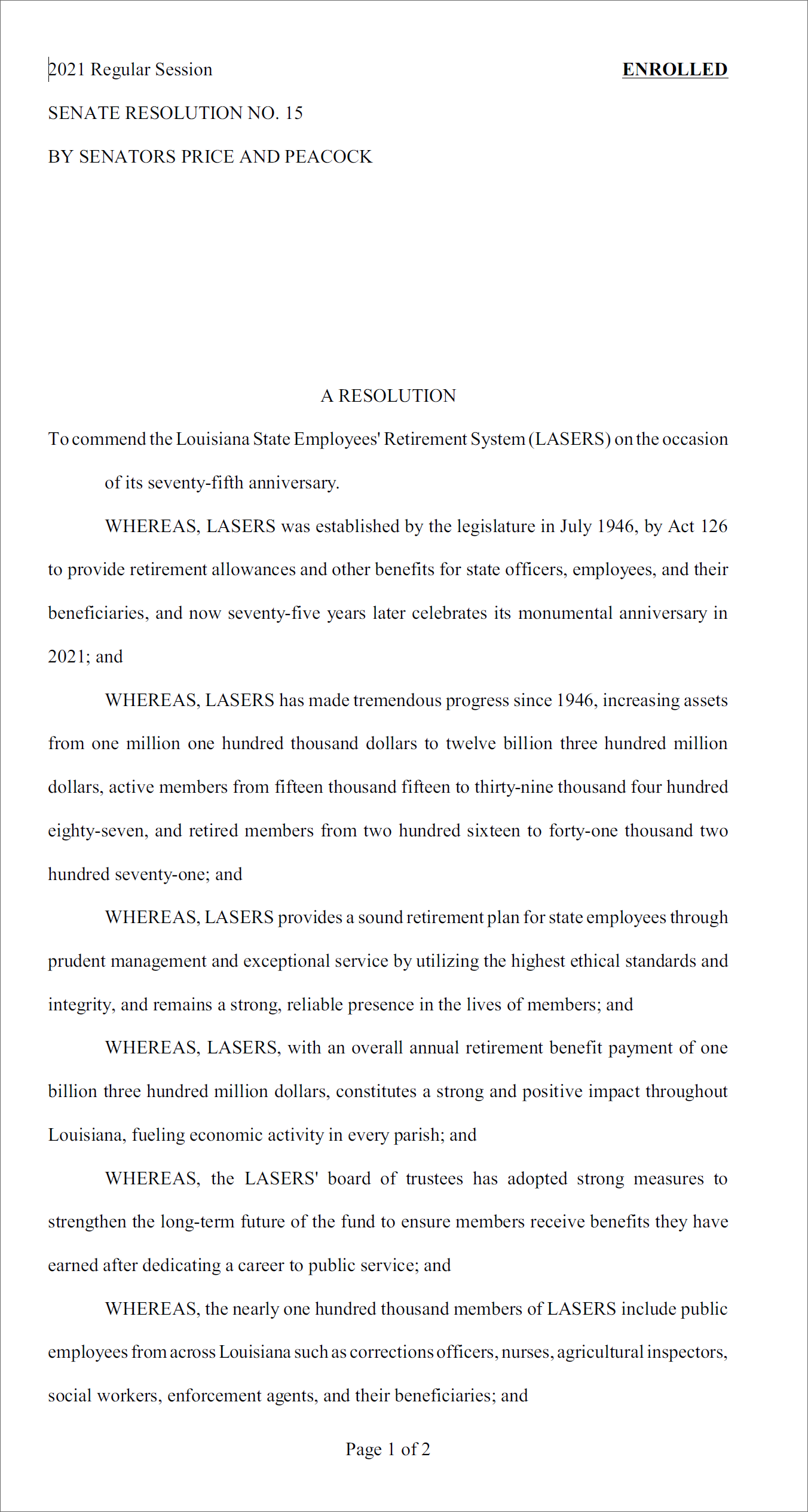LEGISLATIVE HISTORY
Countless pieces of legislation over the past seven decades have significantly impacted LASERS. In the early days, rules and regulations were put in place regarding eligibility for the retirement plan and benefit calculations. Over time, modifications were made and additional plans were added for LASERS members.
Currently, LASERS administers over 20 different retirement plans. In 1987, Louisiana became one of a handful of states to constitutionally require the actuarial soundness of its state retirement plans. This move was apparently prompted by the sizeable debt, (initial unfunded accrued liability or IUAL), the state incurred by failing, for forty years, to pay its necessary employer contributions to the systems. Thereafter, several legislative steps were taken to reduce employer costs and improve funding of the System. Of particular note, Louisiana was at the forefront of pension reform in adopting Act 75 of 2005. For new hires, the Act required increased employee contributions, delayed retirement eligibility, and an increase in the final average compensation calculation period from three to five years, among other things.
Pension reforms since 2010 have already resulted in over a half a billion dollars from additional investment earnings being applied to reduce the state’s debt, (unfunded accrued liability or UAL), to LASERS. An expected $3 billion is expected in cost savings for the System.
Senate Resolution 15
Commends the Louisiana State Employees’ Retirement System on the occasion of its 75th anniversary.
CLICK ON A TAB TO VIEW INFORMATION FROM THAT DECADE.
1946
Act 126 created the Louisiana State Employees Retirement System, effective July 1, 1947.
- Applied to officers and employees in State Service and their beneficiaries.
- Retirement eligibility was 10 years of service at age 60.
- Disability retirement was provided.
- Four retirement options were established.
- Average compensation was defined as the highest five consecutive years of earnings.
- Employee contribution rate was 5%.
- Service credit was allowed for service rendered prior to the creation of the System.
- Military service credit was allowed.
- The annuity upon retirement was based on the actuarial equivalent of accumulated contributions and an employer’s annuity of ¾ of 1% of average compensation for each year up to 35 years plus $150 and an employer’s annuity of 1.5% of average compensation of prior service up to 35 years.
- Mandatory retirement was set at age 65. The member and his employer could apply for an extension for periods of one year up to age 70 if the continued employment would be advantageous to the State because of expert knowledge and qualifications. The Board had authority to grant the extension.
- Investments were allowed in bonds and the Treasurer was custodian of the System funds.
1948
Act 20 added retirement eligibility of 30 years at age 55.
* Denotes pension reform legislation passed since 1987 to reduce employer costs and improve funding of the System.

